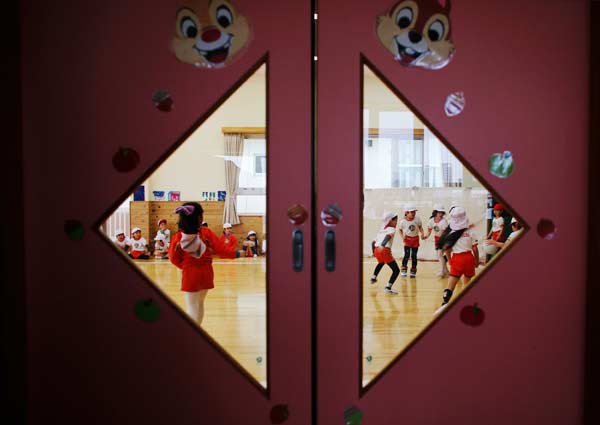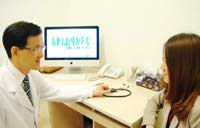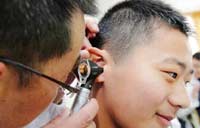No sandbox, no mud pies
 |
|
A survey has found a lack of exercise and outdoor activity is having a detrimental effect on Koriyama's children,both physically and mentally.[Photo by Toru Hanai / Reuters] |
A 30-km radius around the plant was declared a no-go zone, forcing some 160,000 people from homes where some had lived for generations. Other areas, where the radiation was not so critically high, took steps such as replacing the earth in parks and school playgrounds, decontaminating public spaces like sidewalks, and limiting children's outdoor play time.
In Koriyama, the city recommended shortly after the disaster that children up to 2 years old not spend more than 15 minutes outside each day. Those aged 3 to 5 should limit their outdoor time to 30 minutes or less.
These limits were lifted last October, but many kindergartens and nursery schools continue to adhere to the limits, in line with the wishes of worried parents.
One mother at an indoor Koriyama playground was overheard telling her child: "Try to avoid touching the outside air."
Even 3-year-olds know the word "radiation".
Though thyroid cancer in children was linked to the 1986 Chernobyl nuclear accident, the United Nations said last May that cancer rates were not expected to rise after Fukushima.
Radiation levels around the Emporium Kindergarten in Koriyama were now down around 0.12-0.14 microsieverts per hour, from 3.1 to 3.7 right after the quake, Hiraguri says.
This works out to be lower than Japan's safety level of 1,000 microsieverts a year, but levels can vary widely and at random, keeping many parents nervous about any outdoor play.
"I try to keep from going out and from opening the window," says 34-year-old Ayumi Kaneta, who has three sons. "I buy food from areas away from Fukushima. This is our normal life now."


















